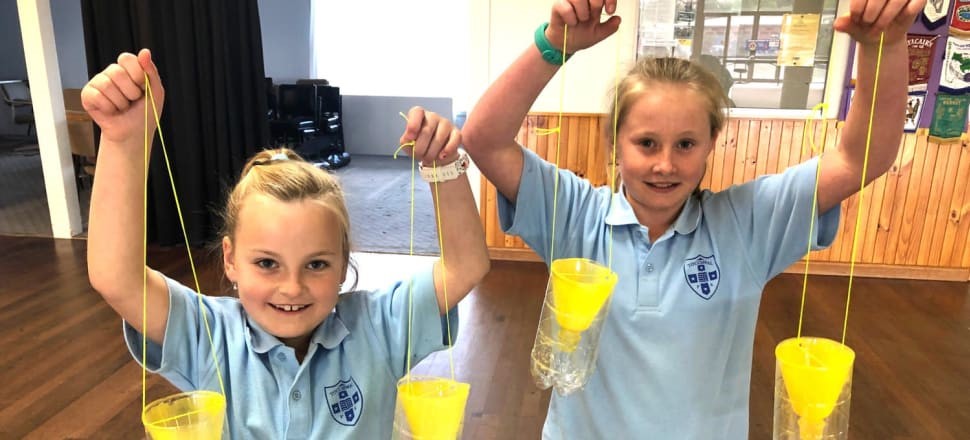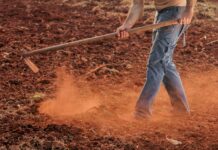By Dr. Nimrod Israely – Founder and CEO – Biofeed Ltd.
(The article is discussing Global Problems while often using Africa as a Case Study)
Note, this manifesto is not about the Coronavirus. I merely present a general strategy approach for dealing with quarantine fruit flies. One may deduce from this to other quarantine pests and diseases. I wish you pleasant reading
Those days, the world is fighting the Coronavirus pandemic, while counting the loss of trillions of dollars and preparing for the coming economic crises.
I think we have heroes, which you are not aware of, yet. They don’t fight the Coronavirus, instead, they fight fruit flies and other agricultural quarantine pests and diseases. They fight those battles to bring us healthy and quality produce.
It is much thanks to them that our countries are fairly well protected from hundreds of potential quarantine pests and diseases. Hence, our farmers can grow higher yields, using less chemicals for healthier produce to buy on local and export markets.
HEROES: PLANT PROTECTION AND INSPECTION SERVICES
Around the globe, the Plant Protection and Inspection Services (PPIS) from all countries are mostly successfully fighting quarantine fruit flies, preventing them from entering the country and establish, hence becoming a permanent local pest.
PPIS teams do it for years, every year, every month, every week and day. Thanks to them, farmers can grow with less or no fruit flies. The country can export and import fresh produce, and we, the consumers, can enjoy out of season fresh, tasty and healthy produce.
And one more thing; they do all this while keeping our economy running, undisturbed. No Shutdown.
What is the “secret of success” that allows PPIS to fight so efficiently fruit flies, and at a low cost versus the high cost of the Coronavirus battle?
The short and simple answer is – PROTOCOLS.
But not just protocols, but ones that have proven themselves through countless real events over the decades, and had the chance for continuous improvement.
THE QUALITY OF A PROTOCOL WILL DETERMINE ITS SUCCESS
PPIS develops protocols, which consist of sets of instructions, methods, and procedures to implement and deal accurately and effectively with quarantine fruit flies, as well as other quarantine pests and diseases.
Despite fruit flies being the most important group of quarantine pests, we rarely hear about them in the news or feel the daily war against them.
We, consumers, are interested in getting quality fresh produce whenever we like. We care less about how it happens.
It happens thanks to those PPIS heroes in the shade, and a long series of quality protocols they have developed and brought to near perfection through the years.
Those protocols enable us to keep this endless bio-security war at low cost, with minimal impact on the public.
THE THREE STAGES OF FRUIT FLY CONTROL

PPIS fruit fly control activities are typically built on three layers of protection –
1. Prevention – prevent fruit flies from entering the country. That is the most cost-effective measure. Prevention of a specific fruit fly becomes less relevant once we monitor it within our borders.
2. Eradication – an uncompromising war against fruit flies that infiltrated the country. Typically, Eradication requires high investment and is implemented in a limited area for a short period. The target is to prevent the flies from becoming established and disperse throughout the country. This is a medium cost-effective measure. Eradication of a specific fruit fly becomes less relevant once the pest makes its way outside the Delimited Eradication Area.
3. Commercial pest control – This is the war waged by every farmer against fruit flies in his own orchard, typically by applying sprays and traps. That is the least effective cost-effective measure.
NATIONAL LEVEL IMPACT
The war on fruit flies is driven by national economic motives. The table below presents the economics of each level of fruit fly control activity .

This table can also be looked at in the opposite direction; the sooner the pest is addressed, the higher are the economic benefits.
Hence, it is clear that the most lucrative investment is in the Prevention phase and the least lucrative investment is in Commercial Control.
ACHILLES HEEL OF THE PROTOCOLS (ITS VULNERABILITIES)
As we know, sometimes quarantine fruit flies do manage to invade into new territories. They do it when the Prevention and the Eradication phases are not effective enough.
To improve our war against quarantine fruit flies, we first need to understand the weak spots in our three layers of protection; Prevention, Eradication, and Commercial Control.
Surprisingly, when we run that analysis we soon find that protocols for the Commercial Control phase get the highest attention and budget relative to their low return on investment (ROI), as seen in the above table.
This is a result of mutual economic interest by farmers who wish to protect their yield and the agrochemical industry whose business model is based on supplying that need.
It is unfortunate that the two most important groups of protocols, with the greatest ROI, receive the lowest budget and attention; Prevention and Eradication.
Why?
Because those protocols are in the government domain, and often governments’ attention is less on Prevention and more on responding to immediate needs.
Without getting into details, the Eradication protocols are the least advanced. That explains well the historically high rate of establishment of fruit flies, once they manage to penetrate through the Prevention layer of protection.
Conclusion for PPIS decision-makers – your highest ROI, as well as peace of mind, will stem from improving Preventative and Eradication measures and protocols (keep in mind that Eradication protocols are currently the least advanced).
CONCLUSION FOR QUARANTINE PESTS AND DISEASES WARRIORS’
It is clear that the most economically viable actions are those that PREVENT the entry of a pest or disease into a country.
Unfortunately, once a pest or disease has entered a country, and thereafter it manages to make its way out of the Eradication Delimited Area, it becomes extremely hard and even impossible to stop its spread and its establishment in the country.
The transition from one stage to another has huge implications, including the understanding of when Eradication in no longer a viable option and the ‘system’ should move to a Commercial Control mode of action.
A GUIDE TO IDENTIFYING YOUR COUNTRY’S STAGE
This is a short guide, which will help you to indicate the exact status of your country per a specific quarantine pest or disease.
Note that all you need is qualitative data to reach conclusions. The fact that there is no need for quantitative data makes this guide especially easy to use.
Guide – think of a specific pest or disease (including human ones). Now read the three categories below and identify which of the three suits best the situation in your country:
1. Full control – there is no ___________ (specify the name of a pest/disease) in any form in my country. Your country’s stage is – Prevention.
2. In control – there are ___________ (specify the name of a pest/disease) in my country, but we know exactly where 100% of them are (in a delimited area). Your country’s stage is – Eradication.
3. Out of control – there are ___________ (specify the name of a pest/disease) in my country but we don’t know where they all are. Your country’s stage is – Commercial Control. Note, this stage is unstoppable from the establishment and expansion of a pest or contagious disease.
Your feedback and thoughts are precious to me. Please share your thoughts with me and the manifesto with someone who needs to see it.For questions regarding a particular country/situation please contact me at nisraely@biofeed.co.il or text me +972-5423425 (WhatsApp).








